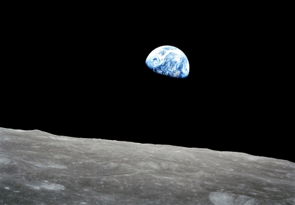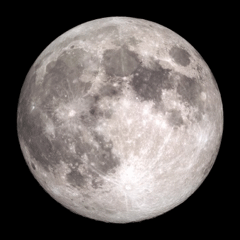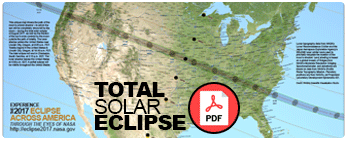WHAT’S UP? Lunar Libration
By Lou Mayo
Here’s a question for you – Does the moon rotate on its axis? Many people would say no, because it keeps only one face (or hemisphere) pointed at Earth at all times. But, in fact, in order to do this, it must rotate once for every orbit around the Earth it makes. You can demonstrate this with a friend. Try walking around your friend and not changing the direction of your face. Even if you started out looking at your friend, you won’t be after taking only a few steps.
Why? The moon and Earth pull on each other distorting their shapes. The moon’s pull on Earth causes the ground to rise up about a foot in the direction of the moon. Earth’s relatively much larger mass distorts the shape of the moon even more. These “tidal bulges” (Think of them as love handles! ) shift the moon’s rocky mass toward Earth and act like handles for Earth’s gravity to hold on to. Over time, this has slowed the moon’s rotational speed until it came to rest with only one side facing the Earth. This is the case for all large moons in our solar system. Io, Ganymede, Titan, Tritan, Charon…, all large moons are tidally locked to their planet.
Now that you know this, I have to tell you that we actually do see a small portion of the other side of the moon! This is called “lunar libration” and there are a few primary reasons for it.
East-West Libration: Yes, the moon is tidally locked to Earth, completing one orbit around Earth in the same time as it makes one rotation on its axis (its day and year are the same!). But because the moon’s orbit is slightly eccentric (oval shaped), it moves faster in its orbit when near Earth and slower when further away. This means that the moon appears to have a slight side to side rocking motion as we view it from Earth and so we can see a little beyond the east and west limbs of the moon.
North-South Libration: Another type of lunar libration is caused by the slight 5 degree tilt of the moon’s orbit with respect to Earth’s orbit around the sun. This means that sometimes the moon passes below Earth’s orbital plane and sometimes above, allowing us to see a little further north and south.
Another, although much smaller factor to consider is your location on Earth. If you live at high northern latitudes, you can see a little further north on the lunar surface and if you live at high southern latitudes, you can see a little further south on the moon’s surface.
All in all, taking libration into account, the moon presents about 59% of its surface to Earth. How much of the moon can YOU see?







